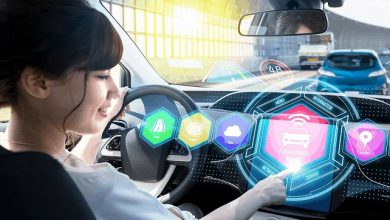How can IoT revolutionize fleet operations?

Commercial fleets are the backbone of global commerce. A well-thought commercial fleet management strategy can make or break your business. All types of businesses, big and small, need telematics data to manage their fleets better. In fact, accurate fleet data helps businesses make better decisions. For example, knowing the real-time fleet location assists with dispatch and routing. Access to a vehicle’s odometer readings can help you plan maintenance schedules.
Fleet management businesses are always seeking ways to reduce operational costs. That’s why there is a growing need for remote monitoring of fleets and telemetry data. According to the Fortune Business, the telematics industry is expected to grow 3.7 times between 2022 and 2029. Large-scale integration of telematics will eliminate paperwork and pave way for profits.
And yet this is just the beginning. Fleet management technologies have undergone an unprecedented transformation in the past few years. Integrating smart devices, sensors, and actuators onto fleet management platforms has several benefits. Such IoT technology simply amplifies the potential of fleet management systems.
What is the Internet Of Things (IoT)?
People say IoT is the future. Well, I say IoT is now! What exactly is the Internet of Things? You can think of it as a massive network to which physical devices are connected. These devices can share data with each other over the air. Hence, in an increasingly digital world, IoT enables the transfer of data between virtually connected devices. This device interconnectivity can be used for the remote monitoring of vehicle metrics.
Telematics and IoT are changing the course of fleet management. Telematics has allowed fleet managers to re-route vehicles, track them in real-time, and plan optimized routes. Thus, facilitating quicker and faster delivery to customers.
However, with IoT, fleet management systems can coordinate fully-fledged supply chains with very little intervention. IoT makes telemetry data practical by adding context. Businesses in many industries have benefitted by inexpensively connecting their assets via IoT. Thus, IoT is affecting various segments of the transportation industry. This includes traffic control, ticketing systems, toll collection, and driver surveillance systems.
How can IoT enhance fleet management?
IoT plays a pivotal role in the field of fleet management. It enables easier collection of telemetry data like fuel levels, vehicle speed, tire pressures, and hours of asset operation. With IoT, fleet managers can keep track of their fleet’s productivity and gain valuable insights. It provides the fleet managers with unbeatable ease of access. Imagine being able to unlock your fleet even when it’s parked half the world away. Or image being able to detect low tire pressures and fix them before they ruin your fleet’s mileage.
- Automation and Productivity
With IoT, businesses can circumvent the traditional ways of handling fleet operations. No more piles of unwanted paperwork and no more losses due to delayed communication! Businesses can replace manual, time-consuming processes with automation. With seamless API integration and cloud storage, businesses can connect with their workforce in real-time. With active, on-site training, an increase in productivity is for sure.
For instance, fleets connected to the network will be able to identify congested or blocked roads. Integrated sensors relay notifications to drivers about driving hazards, weather, and more. If a vehicle breaks down, the system can send notifications to fleet managers and even initiate a request for a tow truck service.
2. Safeguarding the Driver Community
Long driving hours and night shifts make truck drivers vulnerable to fatal accidents. Such mishaps can cost lives. Hence, making the switch to IoT is vital for driver safety. Connected fleets are a safer choice of mobility because they are twice as likely to detect a collision and avert it. IoT makes fleet management safer by providing a comprehensive profile of driving behavior. They can see when drivers are idling, speeding, or using a mobile phone while driving.
Managers can use these metrics to issue alerts, warn, and coach drivers in real-time. Smart IoT dashcams can record snapshots of violation instances and save them on a single platform. These can be accessed by the managers as well as drivers. Video snapshots can be used for driver training and coaching.
3. Improving Fuel Efficiency
Fuel expenses continue to trouble fleet managers more than anything. Even today, fuel continues to be at the top of a fleet owner’s expense list. As your transportation business grows, your fuel expenses will grow too. Here, integrating IoT sensors into an existing telematics platform can be advantageous. With it, fuel managers get vehicle fuel consumption analytics in real-time. They can compare fuel drains with refills and with their expenses to see where they’re losing money.
Most importantly, device-to-device communication will reduce the chances of theft. Now, fleet managers will be able to identify and prevent theft from the comfort of their offices. They will also be able to distinguish thefts from tank leakage and take appropriate action. With IoT, they will be able to respond to any fuel-related issues in actual time. Hence, monitoring fuel levels will help businesses make profitable decisions.
4. Reduced maintenance costs
The efficiency of your fleet depends on its engine’s performance. With engine health sensors, your fleets will report critical errors before it’s too late. On-board diagnostics (OBD) works well with IoT technology, allowing fleet managers to remotely access key vehicle health information. Early malfunction alerts enable quicker responses. This type of predictive maintenance is so much more economical than after-repairs. Besides, it facilitates the smooth functioning of supply chains by preventing unexpected breakdowns.
With IoT, you can track the maintenance of individual vehicular parts. For instance, you’ll learn everything about tire health with tire pressure monitoring sensors. You’ll know about your fleet’s coolant and oil condition with OBD and temperature sensors. With such data, you can also bifurcate maintenance into different categories like battery maintenance, coolant flush, oil change, tire servicing, or a car wash. Such exhaustive reports will help you identify which type of maintenance is costing you the most.
You can also customize your fleet maintenance schedules to maximize efficiency. Set reminders based on the distance or duration. In addition to getting reminders, you’ll also see the maintenance history of each fleet along with their corresponding expenses.
5. Sustainability
Connected mobility is the first step to environmental sustainability. Make your fleet businesses more efficient by monitoring fuel economy and emissions. See how much fuel are you saving by picking optimized and well-planned routes. You can also connect your electric fleet to the IoT network and monitor their power consumption needs.
Monitoring driver behavior and getting alerts can serve more than one purpose. Strict driver monitoring improves efficiency. Minimize fuel-wasting behaviors like idling and harsh braking. In addition to maximizing fleet safety, driver monitoring can put you on the path to greener mobility.
Looking Ahead
IoT is an ecosystem of connectivity. Connected devices communicate to aid supply chains and everyday mobility. It is predicted that by 2025, 28 billion objects will be connected and become a part of the internet of things. This will generate a tremendous amount of big data and businesses will have exciting opportunities to capitalize on it. The hyper-connected network of IoT is going to determine the progress of the transport industry. The businesses that adapt to IoT technologies will have a better edge over their competitors. They’ll have reliable data and an action plan to survive in a competitive market.
References:
https://www.clariontech.com/blog/iot-is-revolutionizing-fleet-management-here-is-how
https://www.kelltontech.com/kellton-tech-blog/effective-ways-iot-revolutionizes-fleet-management
https://www.iotone.com/usecase/fleet-management/u17
Author:

Tushar Bhagat
Director
Uffizio India Pvt. Ltd.
Tushar Bhagat is the CEO of Uffizio. He has simmered 15 years worth of informatics knowledge & experience into a one-of-a-kind telematics platform. This fleet management system has been acclaimed and widely used by businesses in over 60 countries. Mr. Bhagat firmly believes in finding creative solutions to everyday challenges—so businesses can bloom into their full potential.
Published in Telematics Wire



